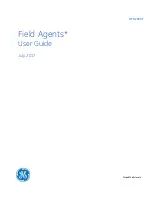
10-54
EPSOn
S5U1C17001C ManUal
(C COMPilEr PaCkagE fOr S1C17 faMily) (Ver. 1.5.0)
10 DEBUggEr
Right-clicking at the "–" position will display a popup menu, so you can choose [Set Hardware Breakpoint]
from the menu to set a hardware PC breakpoint. The "–" mark at the beginning of the line will change to
n
(in
blue by default), indicating that a hardware PC breakpoint has been set. Clicking the mouse button on the
n
clears the breakpoint you have set. Temporary hardware PC breakpoints cannot be set in the [Source] window.
For how to use the functions of the [Source] window, see Section 10.4.2, "[Source] Window".
Breakpoint control (software PC break, hardware PC break)
When software PC breakpoints or hardware PC breakpoints are set, they are sequentially assigned break
numbers beginning with 1 (regardless of the types of breaks set) that are displayed in a message in the [Console]
window when you execute a break setup command. (See the examples above.) These numbers are required
when you disable/enable or delete breakpoints individually at a later time. Even when you deleted breakpoints,
the breakpoint numbers are not moved up (to reuse deleted numbers) until after you quit the debugger.
To manipulate the breakpoints you set, use the following commands:
disable
command: This command disables a breakpoint. (Breakpoints are effective when set and remain
effective unless disabled.)
Example: To disable breakpoint 1
(gdb)
disable
1
enable
command: This command enables a breakpoint.
Example: To enable breakpoint 1
(gdb)
enable
1
delete
or
clear
command: These commands delete a breakpoint.
Example 1: To delete breakpoints 1 and 2
(gdb)
delete
1 2
Example 2: To delete a breakpoint at line 10 in
main.c
(gdb)
clear
main.c:10
ignore
command: This command specifies the number of times that a break is disabled.
Example: To specify that break 2 be disabled twice.
(gdb)
ignore
2 2
Will ignore next 2 crossings of breakpoint 2.
info breakpoints
command: This command displays a list of breakpoints.
Example: To display a list of breakpoints
(gdb)
info breakpoints
Num Type Disp Enb Address What
1 breakpoint keep y 0x00c00026 in main at main.c:11
breakpoint already hit 1 time
ignore next 10 hits
2 hw breakpoint del n 0x00c00038 in sub at main.c:20
For details, see the explanation of each command described later in this manual.
It is also possible to display a list of PC breakpoints in the [Breakpoints] window, where you can operate on
breakpoints to disable/enable or delete. For details, see Section 10.4.6, "[Breakpoints] Window".
forcible break by the [Stop] button
[Stop] button
If the program has entered an endless loop or standby mode (HALT, SLEEP) and cannot exit that state, you can
use the [Stop] button in the [Source] window to forcibly terminate the program. When this break occurs, the
debugger waits for command input after displaying the following message:
Program received signal SIGTRAP, Trace/breakpoint trap.
By using the check box of the dialog box in which this message is displayed, you can choose not to display the
message.
Summary of Contents for S5U1C17001C
Page 6: ......
Page 17: ...1 General S5U1C17001C Manual 1 General ...
Page 18: ......
Page 21: ...1 2 Install S5U1C17001C Manual 2 Installation ...
Page 22: ......
Page 29: ...3 SoftDev S5U1C17001C Manual 3 Software Development Procedures ...
Page 30: ......
Page 103: ...4 SrcFiles S5U1C17001C Manual 4 Source files ...
Page 104: ......
Page 121: ...5 IDE S5U1C17001C Manual 5 gnU17 iDE ...
Page 122: ......
Page 365: ...6 Compiler S5U1C17001C Manual 6 C Compiler ...
Page 366: ......
Page 385: ...7 Library S5U1C17001C Manual 7 library ...
Page 386: ......
Page 405: ...8 Assemblr S5U1C17001C Manual 8 assembler ...
Page 406: ......
Page 439: ...9 Linker S5U1C17001C Manual 9 linker ...
Page 440: ......
Page 449: ...10 Debugger S5U1C17001C Manual 10 Debugger ...
Page 450: ......
Page 626: ...11 Tools S5U1C17001C Manual 11 Other Tools ...
Page 627: ......
Page 696: ...S1C17 Family C Compiler Package Quick Reference Reference ...
















































